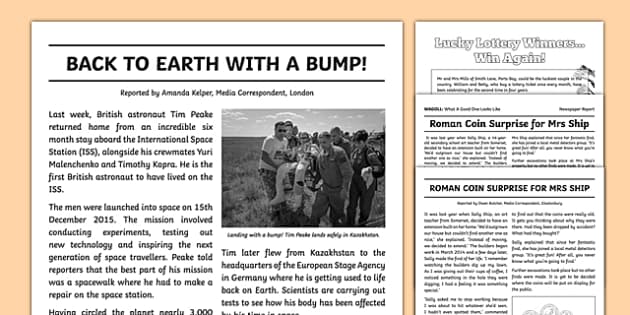The Ultimate Guide To News Articles
The Ultimate Guide To News Articles
Blog Article
The Best Strategy To Use For News Articles
Table of ContentsNews Articles for BeginnersExcitement About News ArticlesHow News Articles can Save You Time, Stress, and Money.Some Known Factual Statements About News Articles Some Known Details About News Articles
Excellent expertise of different topics provides students an affordable edge over their peers. Also though electronic and social networks are readily obtainable, we ought to not neglect how vital it is to read the papers. Parents have to try and instill the practice of reviewing a newspaper as a daily regimen to continue the tradition of the adored print medium.Information stories also consist of at the very least one of the following essential features loved one to the designated target market: proximity, prominence, timeliness, human interest, strangeness, or consequence.
Within these limitations, newspaper article additionally aim to be extensive. Nevertheless, various other variables are entailed, some stylistic and some stemmed from the media kind. Among the larger and more revered papers, fairness and equilibrium is a significant variable in presenting information. Discourse is usually constrained to a separate section, though each paper may have a various total slant.
Papers with a worldwide target market, for example, tend to make use of a much more official style of creating. News Articles.; typical style guides consist of the and the United States News Design Book.
Get This Report about News Articles
As a guideline, journalists will certainly not make use of a lengthy word when a brief one will do. They utilize subject-verb-object building and construction and vivid, energetic prose (see Grammar). They provide stories, instances and allegories, and they hardly ever rely on generalizations or abstract ideas. News writers try to prevent making use of the very same word a lot more than once in a paragraph (occasionally called an "echo" or "word mirror").
Headlines sometimes leave out the topic (e.g., "Leaps From Watercraft, Catches in Wheel") or verb (e.g., "Pet cat female lucky"). A subhead (additionally subhed, sub-headline, subheading, caption, deck or dek) can be either a subservient title under the major headline, or the heading of a subsection of the short article. It is a heading that comes before the major message, or a group of paragraphs of the major message.
Extra signboards of any of these types may show up later in the write-up (especially on succeeding pages) to attract more reading. Such signboards are also used as tips to the article in other sections of the magazine or website, or as ads for the piece in various other magazine or websites. Normal structure with title, lead paragraph (recap in strong), other paragraphs (information) and call details.

Example of a hard-lead paragraph NASA is recommending one more room job. The firm's budget plan request, announced today, consisted of a plan to send out an additional objective to the Moon. This time around the agency intends to develop a long-lasting center as a jumping-off place for various other room adventures. The spending plan demands roughly $10 billion for the task.
The NASA announcement came as the agency requested $10 billion of appropriations for the job. An "off-lead" is the second crucial front web page news of the day. The off-lead shows up either in the top left edge, or straight below the lead on the. To "hide the lead" is to begin the short article with history info or details of secondary relevance to the visitors, compeling them to find out more deeply into a short article than they ought to need to in order to find the crucial points.
Getting The News Articles To Work
Typical use is that or 2 sentences each develop their own paragraph. Reporters normally explain the organization or structure of a newspaper article as an upside down pyramid. The necessary and most fascinating aspects of a tale are placed at the beginning, with supporting info following in order of decreasing over here relevance.
It enables individuals to explore a topic to only the deepness that their curiosity takes them, and without the imposition of information or nuances that they could think about pointless, yet still making that information available to extra interested visitors. The upside down pyramid framework likewise allows articles to be trimmed to any approximate size during format, to suit the space available.
Some writers start their stories with the "1-2-3 lead", yet there are lots of kinds of lead readily available. A kicker can refer to numerous things: The last story in the information program; a "happy" story to finish the program.
Longer articles, such as magazine cover posts and the items that lead the inside sections of a paper, are understood as. Attribute tales vary from straight information in several methods. Foremost is the absence of a straight-news lead, a lot of the time. Rather of providing the significance of a story in advance, function writers may try to draw readers in.
Our News Articles Statements
A function's first paragraphs commonly connect an article appealing minute or event, as in an "unscientific lead". From the particulars of a person or episode, its sight quickly widens to abstract principles regarding the story's subject.

The Editor's Toolbox: A Referral Overview for Beginners and Professionals (2001) Allan M. Siegal and William G. Connolly. The New York City Times Guidebook of Design and Use: The Official Design Overview Made Use Of by the Writers and Editors of the World's A lot of Authoritative Newspaper (2002) M. L. Stein, Susan Paterno, and R.
Report this page